Early Treatment
What is Early Treatment?
Early treatment is essentially orthodontic intervention while several baby teeth are still present. In most patients, this dental phase occurs between 7-10 years old. The needed orthodontic intervention may include a simple appliance, like a space maintainer or expander, a bite-correcting appliance, or braces and wires. Early treatment is often called Phase I treatment, because the majority of these patients will need additional orthodontics once all of their permanent teeth have erupted, which is usually around middle-school.
When Should I Seek Early Treatment?
The American Association of Orthodontics and the American Academy of Pediatric Dentists recommend that all children be evaluated for orthodontic needs by age 7. This does not mean that all children NEED early orthodontic treatment. Age 7 is a good time to get a near- and long- term orthodontic plan in place. When evaluating a 7 year old, the pediatric dentist and the orthodontist are called to put on their orthodontic thinking caps to identify which kids could benefit from early treatment and which can wait. Many pediatric dentists are attune to these needs and will refer you to an orthodontist if/when the timing is right. However, our orthodontic evaluations are complimentary, and as specialists we love the chance to do a thorough exam. If no treatment is needed, we are happy to deliver that news, will offer to monitor the growth and development until the permanent teeth are in, and we can begin building that trust relationship with your child.
Why Get Early Treatment?
Both social and clinical factors play a role in identifying a need for Phase I orthodontics.
Socially
If the appearance of the front permanent teeth are causing your child to hide their smile, or experience teasing, then an early round of treatment can do wonders for their self-esteem. Those front teeth erupt as early as 6 years old, and full orthodontic treatment often doesn’t happen until around 12 years old. That can be a long time to endure negative attention and can potentially have a lasting impact on their psyche. This phenomenon has been studied and is measurable. The term we use for it in the medical world is psycho-social impacts. Every child is unique, however. Two different children will respond differently to the same circumstances. Therefore, we may not know how your child really feels about their dental appearance. If a psycho-social reason for early orthodontic treatment is developing, be sure to tell us at your initial exam. We are pretty good at delicately teasing out the information in the presence of your child and will always encourage a positive self-image!
Clinically
There are two general categories of clinical reasons for Phase I orthodontics:
(1) Conditions that need to be addressed early
(2) Conditions that are nice to be addressed early
If any of the following five conditions are present, early orthodontic intervention will be strongly encouraged. These are the “textbook”, standard, universal reasons for Phase I orthodontics. Some of these conditions, if left untreated, will cause irreparable damage to the teeth, the periodontium (gums), or the shape of the jaw bones. Other conditions need to be addressed early due to the timing of the fusion of cranial (head) bones.
-

An underbite, where the teeth on the lower jaw are growing out in front of the teeth in the upper jaw. If there is an underlying skeletal component, then growth modification (head gear) is needed while the sutures connecting the upper jaw to the cranium are still pliable.
-
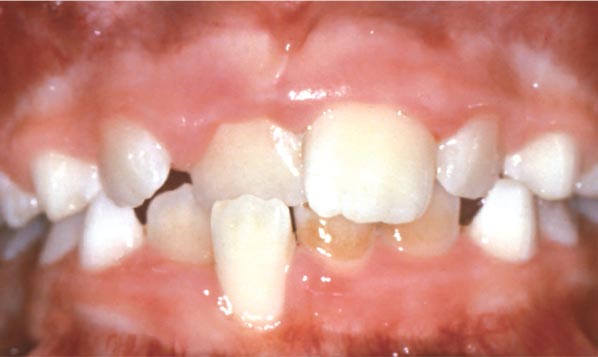
An anterior cross-bite, where one or more top teeth bite behind the lower teeth in the front of the mouth. This can cause gum recession and irreversible tooth wear.
-
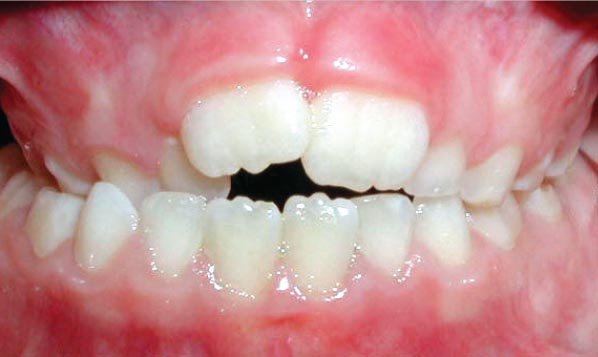
A posterior cross-bite, where the top teeth bite inside the lower teeth in the back of the mouth. This can cause a shift in the bite and irreversible asymmetric jaw growth.
-
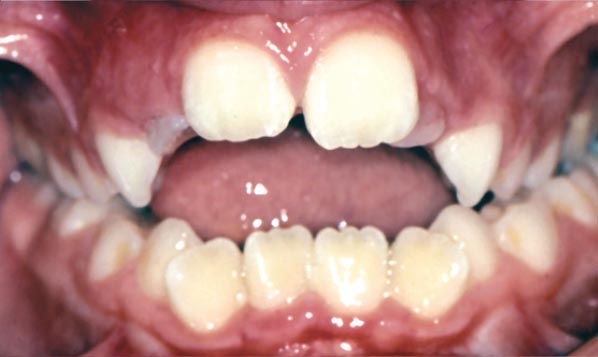
An anterior open bite, where the top and bottom teeth don’t overlap in the front. This is often caused by thumb sucking or tongue thrusting habits. The sooner these habits are abated, the less severe the long-term dental and skeletal impacts will be.
-
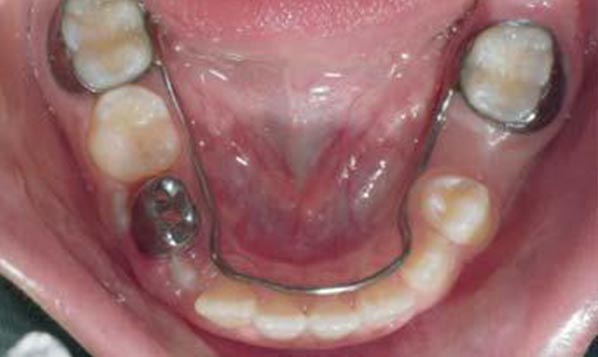
Early loss of baby teeth. Depending on which baby tooth is lost early, a simple space maintainer may be required to hold space for the underlying, unerupted permanent tooth.
-
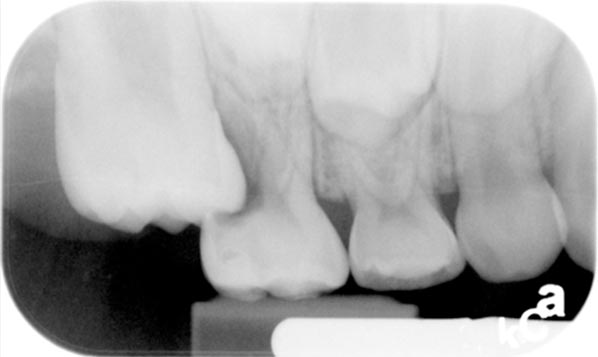
Irregularly erupting permanent teeth. For a permanent tooth that is attempting to erupt in the wrong place, early guidance can reduce damage to neighboring teeth and minimize the need for correction down the road.
When the following clinical conditions are present, an early round of orthodontics can sometimes be significantly helpful in the long-term goal of achieving an excellent bite.
-
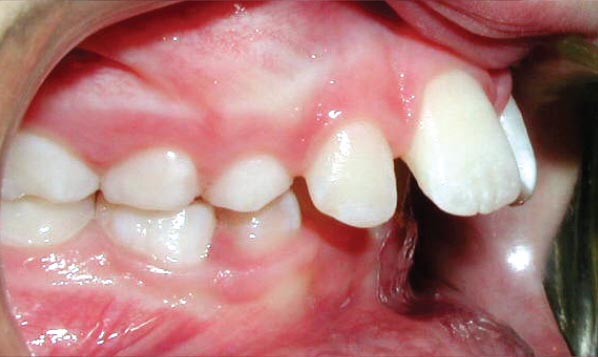
Overbite, where the upper teeth stick out over the lower teeth in the front. If the lower lip can fit behind the upper front teeth, there is an increased risk of trauma to those permanent teeth. This is one of the most common conditions associated with teasing. Getting 50% improvement in this bite issue early increases the likelihood that we will eventually reach 100% improvement with Phase II.
-

Deepbite, where the upper teeth entirely cover the lower teeth in the front. The upper front teeth can “trap” the lower jaw and possibly prevent the full mandibular growth potential from being expressed. Sometimes, something as simple as a special retainer can allow for significant natural improvement of the deepbite. Removing this one issue from the problem list will certainly simplify and expedite Phase II orthodontics.
-
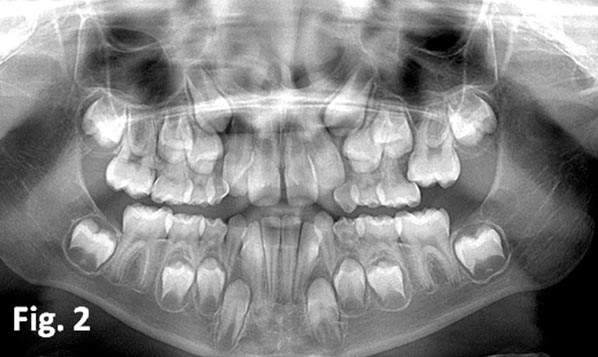
Severe crowding, in which one or more adult teeth are prevented from erupting into their normal position. Making room for the eruption of such teeth can sometimes prevent permanent tooth extraction, simplify Phase II treatment, and result in a healthier and more natural looking gum line – especially for canines.
How Long Does Early Treatment Take?
The active treatment time for Phase I varies depending on what the goals are and what exact orthodontic appliances are needed. Due to the pressures of erupting teeth, the limited number of teeth being treated, the challenges with retention, and the presumed second phase of treatment, the end goal for early treatment is rarely perfection. We always aim to keep early treatment to the shortest time possible and still achieve our goals. It usually ranges from 6-18 months, with 12 months being the average. Once the specific early treatment goals are reached, retainers may be provided to hold the improvements. Some retainers are glued in, and some are removable. Some retainers are used until the permanent teeth come in, but most are discontinued at some point. As your treatment is wrapping up, we will discuss which type of retainer is recommended and for how long.
How Much Does Early Treatment Cost?
The cost of early treatment varies with the complexity of treatment. The number of appliances and the length of treatment play a large role in the total cost. Because the treatment goals and treatment time are limited, Phase I orthodontics is a fraction of comprehensive (Phase II) treatment. If early treatment is recommended at your initial exam, the cost and financing details will be reviewed.
